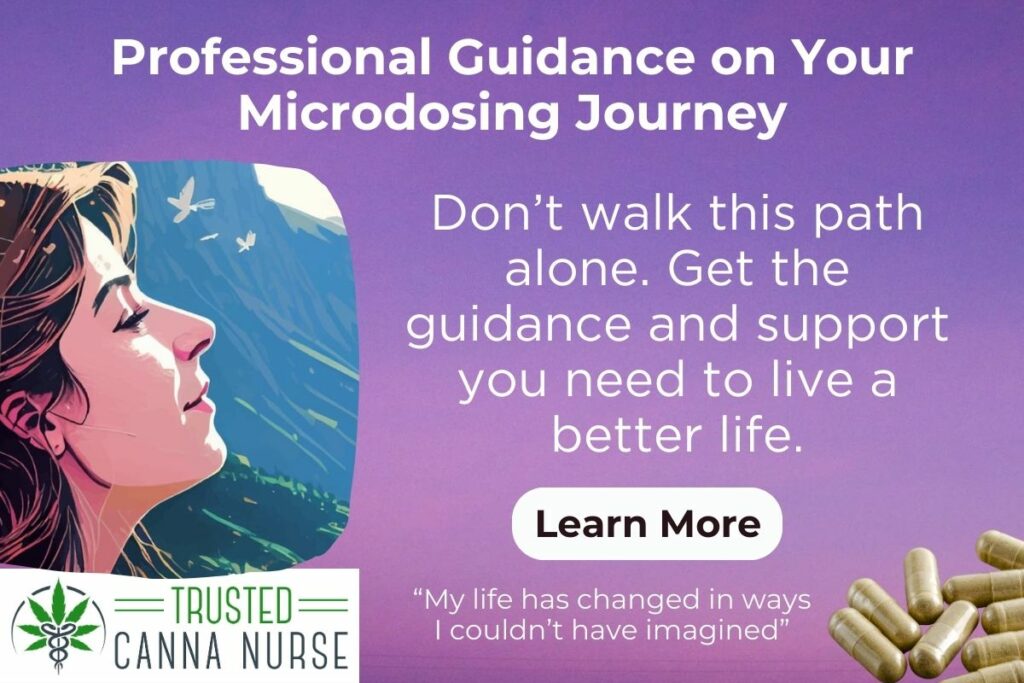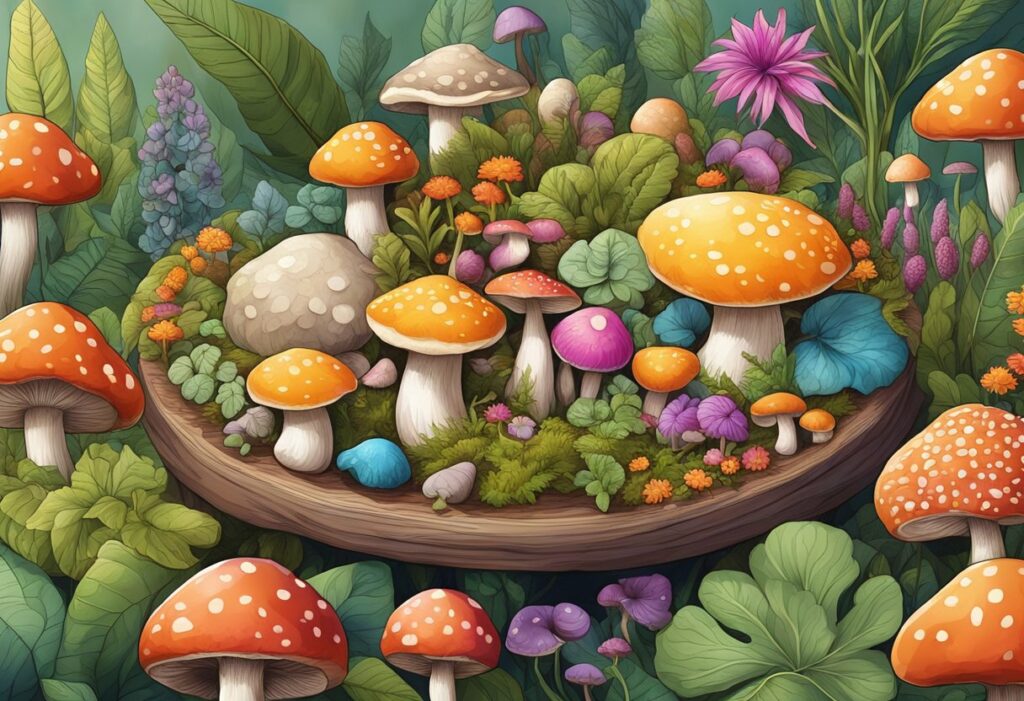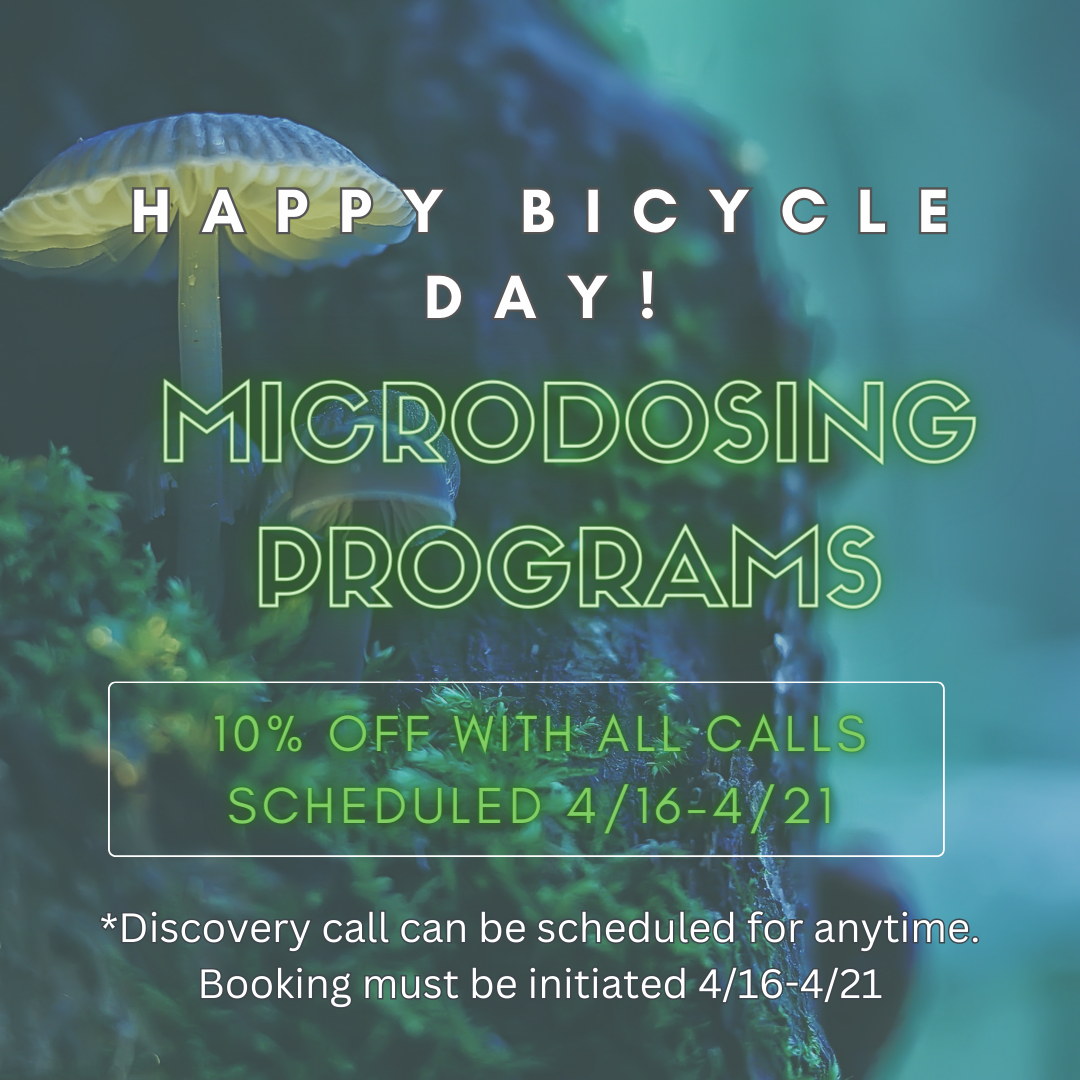When discussing the effects and experiences of psychoactive substances, two options that commonly come up are magic mushrooms, often referred to as “shrooms,” and cannabis edibles. Both are known for their capacity to alter perception, mood, and thought, but they interact with the brain quite differently. Shrooms contain the compound psilocybin, which converts into psilocin and influences serotonin receptors, leading to an altered state of consciousness that can include visual hallucinations and profound changes in thought and emotion.
On the other hand, cannabis edibles contain THC (tetrahydrocannabinol), which binds to cannabinoid receptors and can produce effects such as euphoria, relaxation, and, in some cases, anxiety or discomfort. The method of consumption plays a role in how these substances affect users: edibles take longer for the body to process and can result in a more potent and longer-lasting experience than inhalation.
While shrooms tend to produce more vivid and possibly introspective experiences, cannabis is typically associated with relaxation and mood alteration. Both substances have been explored for their therapeutic potentials, such as in treatments for mental health disorders, making it important to understand their effects, risks, and legal statuses which vary considerably across regions.
Key Takeaways
- Shrooms and cannabis edibles significantly differ in their chemical interaction with the brain.
- Consumption methods influence the onset and duration of the substances’ effects.
- Both are explored for therapeutic use, yet they are regulated differently.
Understanding Psychedelics
Psychedelics encompass a variety of substances with profound psychoactive effects, including psilocybin and THC, key compounds found in magic mushrooms and cannabis, respectively.
Historical Context and Cultural Significance
Historically, substances like psilocybin, which is present in psychedelic mushrooms, have been integral to ritualistic and spiritual practices across numerous cultures. Indigenous groups in Mesoamerica used these mushrooms for religious rites and healing ceremonies, recognizing their powerful impact on the human psyche. Likewise, cannabis has been cultivated for thousands of years, valued not only for its psychoactive properties but also for its utility in the production of textiles and its medicinal benefits.
Psychoactive Properties
Psychedelics such as psilocybin and THC (the main psychoactive compound in marijuana) alter perception, mood, and various cognitive processes. Psilocybin works by affecting serotonin receptors in the brain, which results in altered consciousness and visual and auditory hallucinations. Conversely, THC binds to cannabinoid receptors, often inducing a sense of relaxation and euphoria, albeit with less intense sensory distortions compared to typical psychedelic effects.
Legal Status and Usage Trends
The legal status of psychedelics varies significantly around the world, with shifts often reflecting changing cultural and medicinal perceptions. In some regions, legislation is evolving; for example, certain US cities have decriminalized the use of magic mushrooms, and medicinal marijuana is now legal in many states. These changes are indicative of a broader reassessment of the therapeutic potential of these substances amidst growing research into their benefits and risks.

Comparative Analysis of Shrooms and Edibles
When exploring the differences between shrooms and edibles, it’s crucial to look at their chemical makeup, how potent they are and the prescribed dosage, as well as the physical and mental effects they induce.
Chemical Composition
Shrooms contain psilocybin, a naturally occurring psychoactive compound that is metabolized into psilocin in the body. On the other hand, marijuana edibles contain THC (tetrahydrocannabinol), the primary psychoactive constituent of cannabis. Each chemical interacts with the brain differently, with psilocybin affecting the serotonin receptors and THC affecting cannabinoid receptors.
Potency and Dosage
The potency of shrooms can be hard to predict as it varies widely between species and even within the same batch. A moderate dose typically ranges from 1 to 2.5 grams. Edibles containing THC are also varied in potency, often measured in milligrams, with a common dose between 5 to 10 milligrams for beginners. Both substances must be carefully dosed, as they can produce strong effects at higher quantities.
Physical and Mental Effects
The effects of shrooms typically include altered perception of time and heightened senses. Users may experience euphoria, spiritual experiences, and in some cases, anxiety. Edibles lead to effects such as relaxation, heightened sensory perception, and euphoria, but they can also cause discomfort and confusion if the dose is too high. It is important to note that individual experiences with both substances can vary significantly.

Experiences and Effects
When comparing shrooms and edibles, the experiences and effects are diverse and can vary widely among individuals. Users often report a range of physical and psychological impacts, from heightened sensory experiences to increased anxiety.
Euphoria and Positive Effects
Shrooms are known for inducing euphoria and a sense of connectedness or spiritual experiences. The positive effects associated with shrooms can include feelings of joy and a newfound openness to new ideas. Comparatively, edibles are often linked to a relaxed state, with users reporting a sense of well-being and euphoria.
Hallucinations and Altered Perception
Both substances can create hallucinations and altered perceptions. Users of shrooms may experience vivid visual and auditory distortions, with colors, sounds, and flavors becoming intensely enhanced. Additionally, a sense of altered perception of time is common. For edibles, these alterations are often less pronounced but can still result in changed sensory perceptions and a distorted sense of time.
Anxiety and Adverse Reactions
A challenging experience with shrooms or edibles can invoke anxiety, paranoia, and fear. These adverse reactions are particularly likely in higher doses or in uncomfortable settings. Shrooms may lead to a more intense experience of these feelings, and some individuals may also experience nausea or a significant disconnection from reality. In the case of edibles, similar feelings of anxiety and paranoia can occur, often due to the unpredictability of their onset and intensity.
Usage and Consumption Methods
When approaching the consumption of psychedelics, understanding the various delivery methods and safety protocols is essential. Different approaches can significantly alter the experience, so it’s important for consumers to be informed about their options.
Delivery Methods
Mushrooms are traditionally consumed whole, either dried or fresh. They can also be ground and encapsulated, providing a controlled dosage typically used for microdosing. Edibles, ranging from chocolate to cookies and gummies, involve infusing food products with cannabis, often resulting in a delayed onset of effects compared to inhalation methods.
- Eating raw: Simple, but taste may be unpalatable for some.
- Capsule form: Precise dosages, convenient consumption.
- Infused foods: Variety of choices like chocolates, cookies, and gummies.
Setting and Preparation
The setting for consuming psychedelics plays a crucial role in the overall experience. Preparation includes ensuring a comfortable environment and potentially having a sober sitter present for guidance. Proper dose measurement is a key component of safety, and when it comes to edibles, allowing time for the effects to manifest is critical.
- Environment: Comfortable, safe space is ideal.
- Guidance: A sober sitter is often recommended.
Safety and Control Measures
Safety is paramount when dealing with substances that alter perception. Control measures include starting with low doses and having an understanding of the potency of the mushrooms or cannabis edible. It’s also recommended to have access to professional medical advice in case of an adverse reaction.
- Dosage control: Start small to gauge personal tolerance.
- Potency awareness: Recognize the strength of the product being used.
- Medical support: Ensure access to medical help if needed.
Consumers should always adhere to local laws and regulations regarding the possession and use of psychedelics and cannabis products.
Health and Medicinal Considerations
When comparing the health and medicinal aspects of shrooms (psychedelic mushrooms) and cannabis edibles, it is essential to discuss their therapeutic potential, possible risks and side effects, and the concerns of addiction and dependence.
Therapeutic Potential
Psychedelic mushrooms contain psilocybin, which has been studied for its potential in therapeutic settings. Clinical research indicates that psilocybin may offer benefits for those with treatment-resistant depression or end-of-life anxiety. Healthline discusses how mushrooms can affect individuals differently, potentially leading to states of euphoria or profound personal insight during therapy sessions.
Cannabis edibles, on the other hand, contain cannabinoids like THC and CBD, which have been used to help with nausea, vomiting, and chronic pain. CBD, in particular, is noted for its lack of psychoactive effects and its application in reducing anxiety and promoting emotional well-being.
Risks and Side Effects
Both shrooms and edibles pose various side effects. For shrooms, these can include nausea, dilated pupils, and altered perception of time, as per information from The Cannigma. Adverse reactions might also lead to psychosis in predisposed individuals, necessitating emergency medical attention.
Edibles, due to their delayed onset and potent nature, carry the risk of accidental overdose. Users may consume a higher dose than intended, leading to discomfort, severe anxiety, or visits to the emergency room.
Addiction and Dependence
The likelihood of addiction and dependence can vary between substances. According to current scientific understanding, the potential for addiction with psychedelic mushrooms is relatively low. However, they are not without risks, as users may develop a psychological dependency, especially when used outside of regulated therapeutic settings.
Cannabis edibles can lead to both physical and psychological dependence, particularly with high doses or long-term use. Dependence on cannabis can lead to withdrawal symptoms, suggesting the need for careful usage and possibly medical supervision when attempting to cease consumption.
Social and Legal Implications
The intertwining of social attitudes and legal frameworks plays a crucial role in shaping the landscape for substances like shrooms and cannabis edibles. Within this context, public trust, legislative actions, and the distinction between recreational and therapeutic uses emerge as focal points.
Public Perception and Trust
The cultural perception of psychedelics such as shrooms and the cannabis found in edibles has evolved significantly. Once stigmatized substances are gaining increased public trust, particularly as emerging research highlights therapeutic potentials and safety profiles. However, the trust in these substances often hinges on their legal status and the manner in which they are marketed and dispensed.
Legalization and Access Control
While the legalization of cannabis has spread to various states and countries, magic mushrooms remain largely illegal, with some exceptions where they’re decriminalized. Access control is critical; dispensaries that are legally allowed to sell cannabis edibles operate within a regulated framework, whereas shrooms lack such a regulated system for safe and controlled distribution. Legalization also affects police enforcement efforts, as resources may be redirected from substances that are no longer criminalized.
Recreational versus Therapeutic Use
The use of cannabis edibles and shrooms straddles lines between recreational enjoyment and therapy. Legal systems grapple with this dichotomy, attempting to facilitate access for therapeutic use—often through a prescription or in a clinical setting—while also regulating recreational use to prevent misuse. The changing legal landscape reflects a nuanced acknowledgment of the multifaceted roles these substances play in society.

Personal Experiences and Discussion Platforms
Individuals seeking insight into the effects and experiences of shrooms versus edibles often turn to online communities for first-hand accounts and support. Here, they find myriad personal testimonials and can connect with guidance services for safe practices in personal growth and consumption.
Community Forums and Anecdotal Accounts
Online platforms such as Reddit have become pivotal spaces where users discuss their personal experiences with psychedelics, including shrooms and cannabis edibles. On subreddits like r/shrooms, one can find detailed descriptions of how shrooms and edibles interact and the resulting experiences. Users often describe microdosing as a method for achieving subtle effects and exploring personal growth. Other community-centered sites also emerge as hubs for exchanging stories and advice, but the authenticity of these anecdotal accounts should be critically evaluated.
Guidance and Integration Services
Beyond community discussions, there are services offering guidance and integration support for those who use psychedelics. These services shed light on best practices, including how to safely microdose and integrate the experience into one’s life for personal development. They emphasize the importance of setting and context, the dosage, and the individual’s mental state. By engaging with these services, one can gain a better understanding of the potential impact of shrooms and edibles and how to mindfully approach their use.
Frequently Asked Questions
This section answers common inquiries regarding the distinct experiences between psilocybin mushrooms and cannabis edibles, focusing on specific aspects such as their effects, onset times, duration, intensity of experiences, safety, and legal considerations.
What are the differences in effects between mushrooms and cannabis edibles?
The effects of psychedelic mushrooms often include altered perception of time, visual and auditory hallucinations, and deep emotional experiences. Cannabis edibles tend to induce relaxation and euphoria, but can also cause anxiety or paranoia in some users.
How does the onset time of psilocybin compare to THC in edibles?
Psychedelic mushrooms typically begin to show effects within 20 to 40 minutes, with full effects manifesting in about 60 to 90 minutes. In contrast, THC in edibles can take between 30 minutes to 2 hours to onset, with several factors influencing the timing, such as metabolism and recent food intake.
What are the typical durations of a trip on psychedelics versus a high from edibles?
A trip on mushrooms can last roughly 4 to 6 hours, with an afterglow that may prolong feelings of well-being. The high from cannabis edibles can last anywhere from 4 to 8 hours, depending on the dose and the individual’s tolerance.
Can you describe the intensity of experiences with psychedelic mushrooms versus marijuana edibles?
The intensity of a psychedelic experience with mushrooms can be profound, sometimes leading to transformative insights or intense emotional processing. The intensity of marijuana edibles varies, with higher doses potentially leading to a stronger and more uncomfortable high, especially for inexperienced users.
What safety considerations should be taken into account when consuming mushrooms or cannabis edibles?
Safety with mushrooms and cannabis edibles involves starting with a low dose, especially for inexperienced users, and being in a safe, comfortable environment. It is also important to consider potential interactions with other substances and one’s current mental health state.
Are there legal distinctions between possessing mushrooms and cannabis edibles in various regions?
Legal distinctions exist and vary widely for mushrooms and cannabis edibles. While some regions have decriminalized or legalized the use of cannabis and related products, psychedelic mushrooms remain illegal under federal law in many places. Users must observe the laws of their specific jurisdiction.
Last Updated on January 28, 2024 by Megan Mbengue, BSN, RN, CHPN


